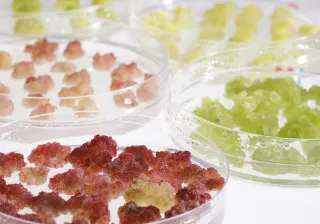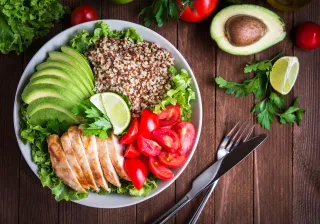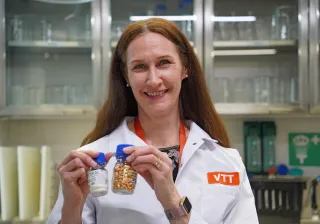Food packaging plays an essential role in our daily lives driving the accessibility and affordability of food. It is key in ensuring the protection, preservation and distribution of food and as a direct result the minimisation of food waste. Historically, in the food sector, plastic has been the material most applied, while paper and metals have also been commonly used. Today, efforts focus on reducing plastic or substituting it entirely with recycled or biodegradable materials. The recycling industry today is very dynamic. The technical, economic, and environmental viability of circular technologies are constantly improving and will, in turn, aid more wide-scale adoption of sustainable practices in the business models of players in the whole packaging value chain.
The emergence of a global middle class and resulting increase in both trade and consumption have led to a significant increase in packaging and the generation of packaging waste. Packaging recycling and reuse are thus not only the main focus of Europe’s Circular Economy strategy but has also gained significant attention in other regions.
Although considerable development has taken place over the last couple of years, both with regard to package eco-design and recycling technology, recycling rates especially of plastic and polymer-coated packaging remain relatively low. For example, in the United States, recovery rate for packaging and foodservice plastics is at about 14 %. In Europe, the plastic packaging recycling rate reported is somewhat higher at approximately 40 %, compared to approximately 80 % for paperboard on both continents.
A well-run recycling system depends not only on the local recycling capacity but also on the collection and sorting infrastructure, which is still less than adequate in many countries across the world.
Big steps ahead for the recycling infrastructure
We anticipate that the coming five years will see the roll out of recycling systems for packaging that today is not being recycled at scale. Substantial amounts of packaging produced today is not easily recycled in existing recycling systems. This is especially true for multi-material packaging, which offers superior packaging attributes but poses a challenge in mechanical recycling today.
While the recycling of fibre-based material is well established, coated paper packages are not included in many collection schemes and often end up in mixed waste instead of being recycled. Centralised collection schemes offered by, e.g., paper cup and waste management companies to food services and businesses enable their recovery and processing on an improved economy of scale. New solutions have also been rolled out for the separated polymer and or the aluminium coatings.
Major factors affecting recycling rates are linked to the lack of infrastructure for the advanced sorting of recovered used material and the deployment of chemical plastic recycling as a complement to mechanical plastic recycling. Chemical plastic recycling is seen as a solution for multilayer plastic packages, for which there are few mechanical recycling options that have the have the capacity to re-cycle at commercial scale. As a result, we assume that there will be a significant increase in industrial chemical recycling capacity in the US, Europe and East Asia in the next 3-4 years. An important aspect of chemical recycling is that chemically recycled polymers can be included in food packages when fully de-polymerised. Today, recycled polymers which are certified as food contact material are, in practice, mainly limited to recycled PET.
Key to new recycling solutions lies in the functioning value network
Fundamental for the development of recycling solutions are recent alliances between brand owners, recycling and sorting technology developers and waste management companies. Such partnerships are essential for future investment in new recycling technology; on one hand, the partnership provides accessibility to used material and, on the other hand, a potential user for the recyclate.
As a whole, the recycling industry is today very dynamic. With the shift towards sustainable practices, and the adoption of automation, industry players have with the support of R & D & I organisations, fast-tracked the development of high potential recycling technologies. These developments will improve the technical, economic, and sustainable viability of circular technologies and will, in turn, aid more wide-scale adoption of sustainable practices in the business models of players in the whole value chain.
Removing plastic entirely from our food supply may not be the best solution when it comes to protecting the environment and conserving valuable resources. Acknowledging the doubtful role food packaging plays in environmental littering, all parties - businesses, policy makers and consumers - recognise there is more all need to do to ensure the materials present in post-consumer packaging do not become waste and create negative impacts. Preventing materials becoming waste requires those materials to be prepared for reuse, which calls for more and better recycling. They should be recognized as valuable secondary materials, which in a resource-strapped world can play an important role in supporting raw material supply.
Read more: Recycling food packaging: Discussion paper





